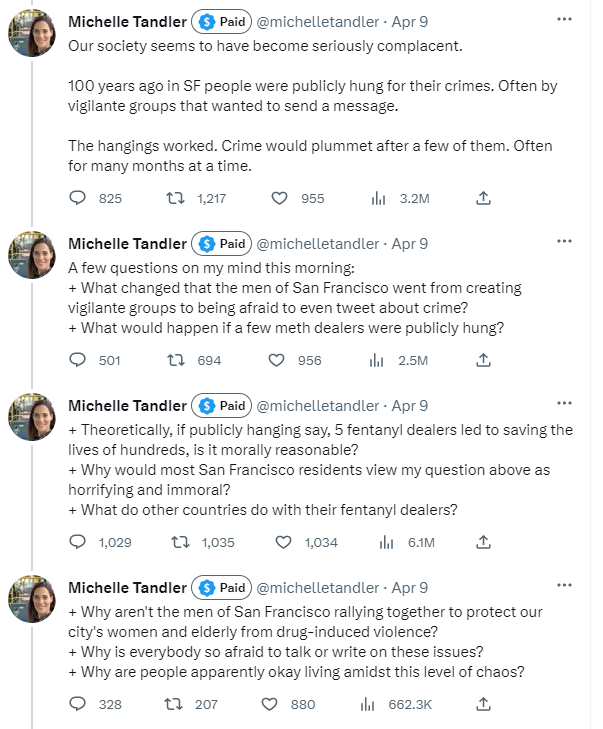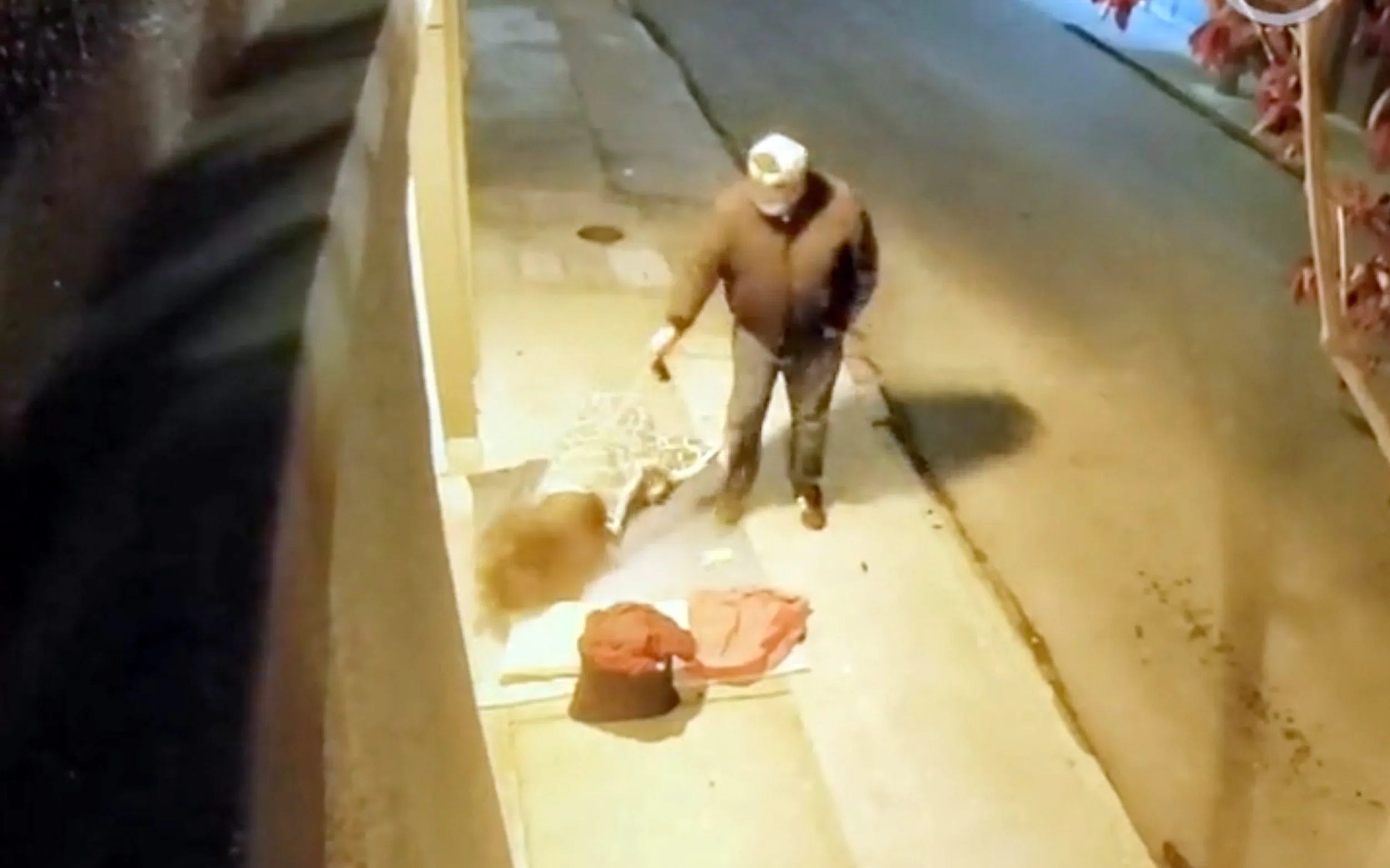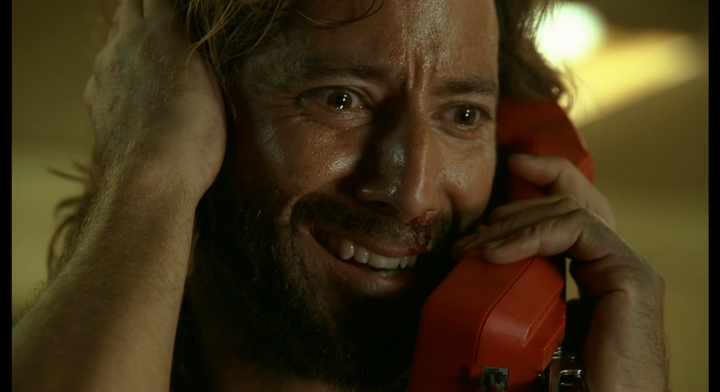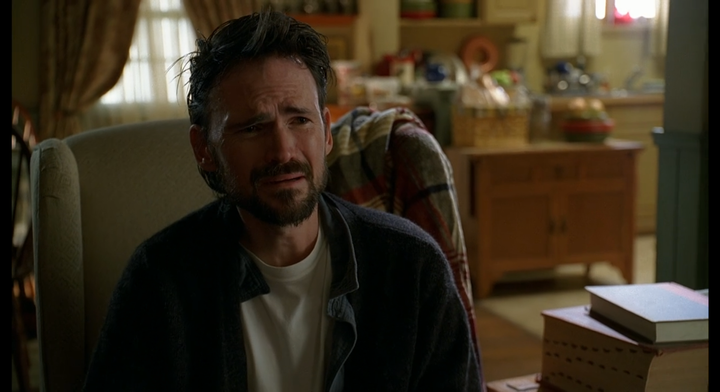Jordan Neely Was a Person
One Nation Under Fear - Part 1

Jordan Neely was a person.
He was stranded by our society, left without access to basic human needs throughout his short life, and, because of his desperate need and our warped priorities, his existence filled people not with sympathy but with fear. Then he was killed, which means he is dead, and that is a tragedy, because he was a person.
I’m saying these obvious things, because they’re clearly not obvious to everyone.
Not just that Neely’s death was a tragedy, but that he was a person.
These are controversial propositions.
I know this, because there is a controversy.
Ask anyone.
There are people outraged at any suggestion that Neely’s death was a tragedy, an outrage that seems born out of a reaction to the inference that he was a human, because the things these people say only make sense if they have decided that he was not a person.
I notice that many of these outraged people are the exact same people who seem to think every daily police lynching or vigilante act against a marginalized person is justified, and get outraged at every suggestion that the latest atrocity was tragic or unjustified, and their outrage is validated in our halls of power and our national media apparatuses as one of many equal competing perspectives, which means that instead of serving as a shocking revelation of collective cultural inhumanity toward one another, it becomes a debate instead—a controversial debate.
So, to repeat: Jordan Neely was a person, a human, and his death was tragic because he had the same measure of humanity as his killer, or you, or me, or any of the rest of us, and observing these facts is a controversy, as is any attempt to establish the humanity of anyone who our society has marginalized, which is a word that means “this human’s humanity has been systematically ignored.”
To briefly change the subject somewhat, I’ve been told that I ought to make more of an effort to understand other points of view and perspectives. That’s interesting, because I am not unhoused or marginalized, and so I thought that this is what I was already trying to do, but that’s not what is meant. What’s meant is that I should try to understand the perspectives of others, who refuse to understand any perspectives other than their own.
Anderson Cooper told me that most recently, just last night, after his network platformed our previous president and filled their studio with his cheering fans, so that among other things he could defame E. Jean Carroll, a human being who he at the very least sexually abused (her claim, which I find entirely credible, is rape). Sexual abuse is a crime, and it is the habitual practice of the former president, according to none other than him, for which (along with defamation) a civil jury had just found him liable. And he also tried to murder Congress and overthrow democracy in the United States, and he is guilty of many other crimes as well, some of which we watched him do and brag about in public, and others of which we must only presume. And he once took out a full page ad in four New York newspapers calling for the execution of some Black kids for a crime they didn’t commit, and so on.
Anyway, mere hours after being found liable to the tune of $5 million for defamation and sexual abuse, the former president and lifetime criminal was given a town hall by CNN, one of our most prominent manufacturers of consent, and he immediately proceeded to defame the victim of his sexual abuse, and his crowd of supporters that CNN picked to cheer everything he said clapped and cheered, which only seems possible if they don’t consider E. Jean Carroll to be a person.
This is the sort of behavior American conservatives really seem to love, which appears to be the actual reason why they love the former president and almost-certain rapist who delivers such behavior to them with such regularity.
And I’m told by Anderson Cooper that this represents an important perspective for us to listen to and understand.
So I’m going to do that now.
I’m going to try to understand the perspective of people who think that a former president found liable for sexual assault is funny and good, or who believe that Jordan Neely’s killing was a good or at least necessary and justified thing, and who maybe think both of those things at once.
I confess I have trouble understanding the goodness of most killings. Almost no killings seem good to me—maybe none at all. I’m an impossibly naive fool, as has been pointed out frequently, and as a result, I miss many things that are obvious to others about why each killing of each marginalized person is an example not of a failed system, but of a system working properly and exactly as intended, or of a system that has not yet been made cruel and punitive enough. With each judicial or extrajudicial killing of each marginalized person—usually Black, sometimes trans, sometimes gay, sometimes unhoused, sometimes Jewish or Muslim, sometimes Middle Eastern or Indian or Native American or East Asian, sometimes mentally ill, sometimes addicted, and often some combination of these, but always marginalized—I discover many very fine people eager to explain to me why this latest killing is every bit as just and right and good as all the ones that came before, and I really simply have trouble grasping it. It always seems wrong to me, even though I’m assured—often with the exasperation of a math tutor explaining a simple concept to a dull student for the 200th time—that the killing was actually very good indeed.
But today I’m going to really try.
I’m going to really listen to that perspective.
We could start with the lady who became a main character on Twitter last week, by musing about unhoused people, and mentally ill people, which led to publicly musing about bringing back vigilante lynchings to deal with the drug problem, which she connected to unhoused people and mentally ill people by just equating all of them as essentially fungible.

But maybe that’s not a fair place to start. After all, this happened on Twitter, and I’m told that Twitter isn’t real life, even though lynch lady Doris was only saying what a lot of people are saying about unhoused people, on Twitter and elsewhere.
For example, last September, Fox News propagandist and blowdried hair rack Jesse Watters referred to homeless people as an “invasive species,” which is something you say about a group when you’re making a case to exterminate them, especially if you say it on a fascist propaganda network like Fox News, which is where Jesse Watters said it. But maybe cable news isn’t “real life” either, any more than Twitter is.
If we want the real world, I guess we could talk about the former San Fransisco Fire Department commissioner. Don Carmignani held that position, and in April he was beaten with a pipe, allegedly wielded by a unhoused person, and this fractured his skull and so on. It’s the sort of horrific attack that might make you fear unhoused people and believe that self-defense is justified against the threat they pose simply by existing in proximity to you.
But then video evidence was released by the accused’s defense attorney making a very strong case that Carmignani had a habit, well-known among San Fransisco’s unhoused community, of walking up to unhoused people and dousing them with bear spray. Bear spray1 is regulated by the EPA. It requires a warning label on the cannister, which reads, in part: "may cause irreversible physical eye damage if sprayed in the eye at close range.” It also can make it hard to breathe, which is something that people do.
It strikes me that this is not the sort of thing you douse anyone with if you still consider them to be a human being, but it might be the sort of thing that you use if you have decided you’re dealing with an invasive species.
It’s the sort of astonishingly cruel thing that, were you to do it in a dream, you would wake in a cold sweat, relieved that it was not true of you. Carmignani appears to have done it as a hobby, or maybe a chore. Maybe he thinks he was defending his community or himself. It seems unlikely that it would occur to him that the man with the pipe might have been defending his community or himself. I suspect that it would seem like a category error to him. It certainly seems like a category error to the people I’m trying to listen to, the ones trying to explain to me why dousing an unhoused person with bear spray, or killing them etc., is good, or at least necessary.
But an unhoused person is far more likely to be harmed, abused, assaulted, menaced, harassed, or killed, than a person who has somewhere to sleep. It would be hard to imagine somebody in more dire need of self-defense than unhoused people, if we agreed that they are people.
The rhetoric suggests, and the evidence demands, that unhoused people are in grave, persistent, and constant danger from all the rest of us and from the systems of deliberate neglect and punitive control we all fund and support. And yet it is unhoused people who are understood to be the danger … to us.
My observation is, I think a lot of us do not believe they are people.
I think it’s a belief that we don’t even tell ourselves.

With each extrajudicial killing of each marginalized person—usually Black, sometimes trans, sometimes gay, sometimes unhoused, sometimes Jewish or Muslim, sometimes Middle Eastern or Indian or Native American or East Asian, sometimes mentally ill, sometimes addicted, and often some combination of these, but always marginalized—I’ve noticed an unusual rhetorical project immediately begins, in traditional and social media, in conversation, and in people’s internal structures of belief. The project involves convicting the victim with a crime that retroactively convicts them and sentences them to the death they received, some crime that makes them the perpetrator of their own killing.
This can be any crime at all. It usually isn’t even a crime.
These crimes are usually presented with a sort of rhetorical flourish, a self-evident finishing move against any attempt to establish the killing as tragedy, an obvious proof that justifies the killing and requires no further embellishment.
Jordan Neely threw his jacket to the ground, I’ve heard.
Jordan Neely was behaving erratically, I’ve heard.
Jordan Neely has been arrested many times, I’ve heard.
Jordan Neely scared people, I’ve heard.
These are apparently capital crimes, which only seems possible to believe about somebody if you do not believe you are talking about a person.
The jacket in particular seems to be a very important detail. It’s meant to be the pivot, a big reveal. He threw his jacket. On the ground! He threw it with an audible zipper sound. This is a detail offered to prove that he was scary, and I’m told that because he was scary it is his fault that he was killed, because he was scaring people, and what after all are scared people to do? Stay scared?
After all, are people not allowed to defend themselves?
Nobody who tells me he was scary ever seems to think that maybe he was scared, too. I mean, he threw a coat to the ground, yes … but then somebody, you know, killed him, here in a land where comfortable people openly fantasize about public vigilante lynchings of people like him, and professionally groomed millionaires call people like him vermin on nationally televised propaganda platforms, and former public officials wander the streets spraying people like him with debilitating chemical weapons. I myself do not have a fear of audible zipper sounds, but even if that was my one greatest phobia, I think it’s possible that between the two of us, Jordan Neely might be able to lay the greater claim to fear. I think it’s possible that of all people on that train that day, Jordan Neely could lay the greatest claim to fear.
For example, he’s the one who was killed.
But I’m told that Jordan Neely was scary, by people who find unhoused people scary.
And I’m sure sometimes unhoused people are unnerving, even scary, and sometimes do pose a threat, maybe even one that might require self-defense. Desperation makes people desperate, is something I’ve sometimes noticed.
And I’m often scornfully asked if I would like to share a train car with an erratic person who is behaving aggressively and shouting in a threatening manner.
And I must confess to you: no, that does not sound like fun.
I might make the point that it is a chronic and society-deep desperation that seems the problem most in need of a solution, not the people experiencing desperation … but I’m trying to understand different perspectives, so let’s focus on the scariness.
That Jordan Neely was scary would be a hard thing to disprove. All you have to do in order to be scary is to scare somebody, and all that has to happen for you to scare a person is for that person to be scared. And people are scared of a lot of things these days, and more and more of them think being scared justifies immediately and summarily killing the thing that scares you—and I say “thing” purposefully. Nobody making this argument seems to be thinking of Jordan Neely as a person, any more than the people who explained to me years ago that Trayvon Martin was wearing a hoodie seemed to be thinking of Trayvon Martin as a person.
Trayvon Martin, in case you’d forgotten, was a boy who in 2012 was murdered in his neighborhood during an altercation with George Zimmerman, the armed man who was stalking him. The altercation occurred because Zimmerman felt that Martin didn’t belong in that neighborhood, and so Zimmerman decided to solve the problem, which was not a problem, by adding to the situation a problem named George Zimmerman.
I’m told that George Zimmerman, who was armed, and was not being stalked and who did not wind up being killed by the person he was stalking, was afraid during the altercation. I’m told this by people who seem to believe that Trayvon Martin, who was not armed, and was being stalked, and who did wind up being killed by his stalker, was not scared, or at least his fear did not matter in the same way that George Zimmerman’s did, even though it would seem that Martin had the more credible claim to fear. All this is a perspective that only makes logical sense if you believe Zimmerman was a person and Martin was not. Again, I was told with a sort of finishing-move rhetorical flourish that Martin was wearing a hoodie, which he should not have been, because hoodies are scary. After all what else was Zimmerman supposed to do? I was asked in 2012, by people who clearly also were frightened by black youths in hoodies.
It’s a good question. What was he supposed to do? Not stalk him?
I bring up Martin’s murder because it was the first time I really noticed this trend: the fact that the various societal accoutrements of personhood—the ability to feel fear, to be threatened, to defend oneself—are usually in these cases extended only to whoever did the threatening and the killing, almost as if this were a society that didn’t believe that victims of that society were people.
Jordan Neely didn’t have a hoodie, but he did have a jacket, which he threw on the ground. So that’s something we can learn by considering other perspectives: upper body wear is apparently terrifying. And Neely was scary, which we know, because people were scared.
People were scared, they say—a categorization that tacitly omits Jordan Neely, the only person who didn’t leave the train alive, which makes Jordan Neely the person on that train with the most credible claim to fear … as long as you consider Jordan Neely a person, that is.
But that won’t do, because if he could have been scared, then he would have been justified in killing people on the subway car, too—at least as justified in killing the man who killed him as the man who killed him was in killing him. But self-defense is for people, and what makes a marginalized person marginalized in the first place is that they are not considered a person.
Jordan Neely can never defend himself. He can only be the thing people defend themselves from.
Jordan Neely can never feel threatened, even though he was tired, even though he was hungry, even though he had nowhere to live, even though he was the one about to be killed. Jordan Neely can only be a threat—a threat to people.
Jordan Neely can never be scared. He can only be scary.
Being scared is for people.
Jordan Neely can never engage in self-defense, and nothing done to him can ever be anything other than self-defense.
Self-defense is for people.
And for people who believe that every killing is every bit as just and good and right as the one before it, Jordan Neely is, very clearly, not a person.
He can’t have been.
Because if Jordan Neely was a person, then we shouldn’t have killed him. We should have taken care of him.
And now we come to the heart of it.
I think it is this—the idea that we bear a responsibility to care for everyone, the idea that people who have been excluded from our society represent our collective failure, not their personal one—seems to me to be the truly outrageous proposition to those who have decided that other people don’t matter, and in fact aren’t even people.
And it’s the urge to keep ourselves free of that responsibility that drives those narratives, that convert simple statements of truth and basic decency—that Jordan Neely’s death was a tragedy, because we failed him, and he was a person—into controversy. And it is our shared urge to keep ourselves free of that responsibility that leads so many of us to accept simple affirmations of another human’s humanity, not as obvious, but as controversial.
Huh.
I really do learn a lot, when I listen to other perspectives.
How about that?
Years ago I wrote about what I perceive as the genocidal spirit that runs through our culture. By “spirit” I mean the collective intent that forms around shared human ideas, and the collective energy that brings that intent into reality. By “genocidal,” I mean “genocidal”—literally an intention to enslave and eradicate.
As I saw it, our genocidal urge rested upon great lies we told ourselves right at our nation’s outset—which makes them our foundational lies.
The lie of separation. The false idea that we are not related to one another, and bear no responsibility to or for one another. The idea that we can utterly neglect the people whose need is greatest and not expect them to show up on our street corners and public transport, looking as desperate and isolated and alienated as we have allowed them to become.
The lie of scarcity. The false idea that humans are not valuable simply for the fact of their humanity; that basic human needs cannot be made available to all, because there is not enough to go around, and therefore life must be earned by creating profit or possessing property. That failing to earn life means earning death. That receiving any basic need if you haven’t earned life is either a merciful gift, to be mediated entirely by the comfort of those who have earned life, or else an unacceptable theft, to be punished as severely as possible.
The lie of redemptive violence. The foundational supremacist belief that some people matter and others do not, and that not only do other people not matter, but it is their fault they do not matter, and it is therefore good if, as a consequence for their failing, they are harmed. But it is even better if they are killed.
That’s what I think we’re dealing with. Spiritual beliefs that run so deep we don’t even let ourselves know about them, which show not in what we say we intend but in what actually happens, which come bubbling up in assumptions we reveal to attentive listeners, without even knowing ourselves we have done so.
This feels like a two-parter. There’s a deep current running through this country, and next week, if all goes to plan, I’ll take a bit more time and space to name it and explore it. It’s a current of fear, used to justify murder. I don’t doubt it can be found in other countries, but I think there may be something unique about American fear.
I think we need to push back against that current as a matter of survival—even those of us who don’t care a bit about unhoused people and their impossible plights, even those of us who are only motivated by self-interest.
Because I don’t believe that unhoused people are the only people that a genocidal spirit will learn to fear.
Eventually, a genocidal spirit, which uses its fear to justify its intentions, will learn to fear all people.
And Jordan Neely was a person.
A.R. Moxon is the author of The Revisionaries, which is available in most of the usual places, and some of the unusual places, and is co-writer of Sugar Maple, a musical fiction podcast from Osiris Media which goes in your ears. Once he had a life, or rather life had he; he was one among many, or at least he seemed to be.
Incidentally, bear spray was used against Brian Sicknick, the police officer who died in the Jan 6 Capitol uprising, which the former president and lifetime criminal instigated, after he lost the election but before CNN gave him a town hall and a friendly audience to assist in his re-election. ↩




Comments ()